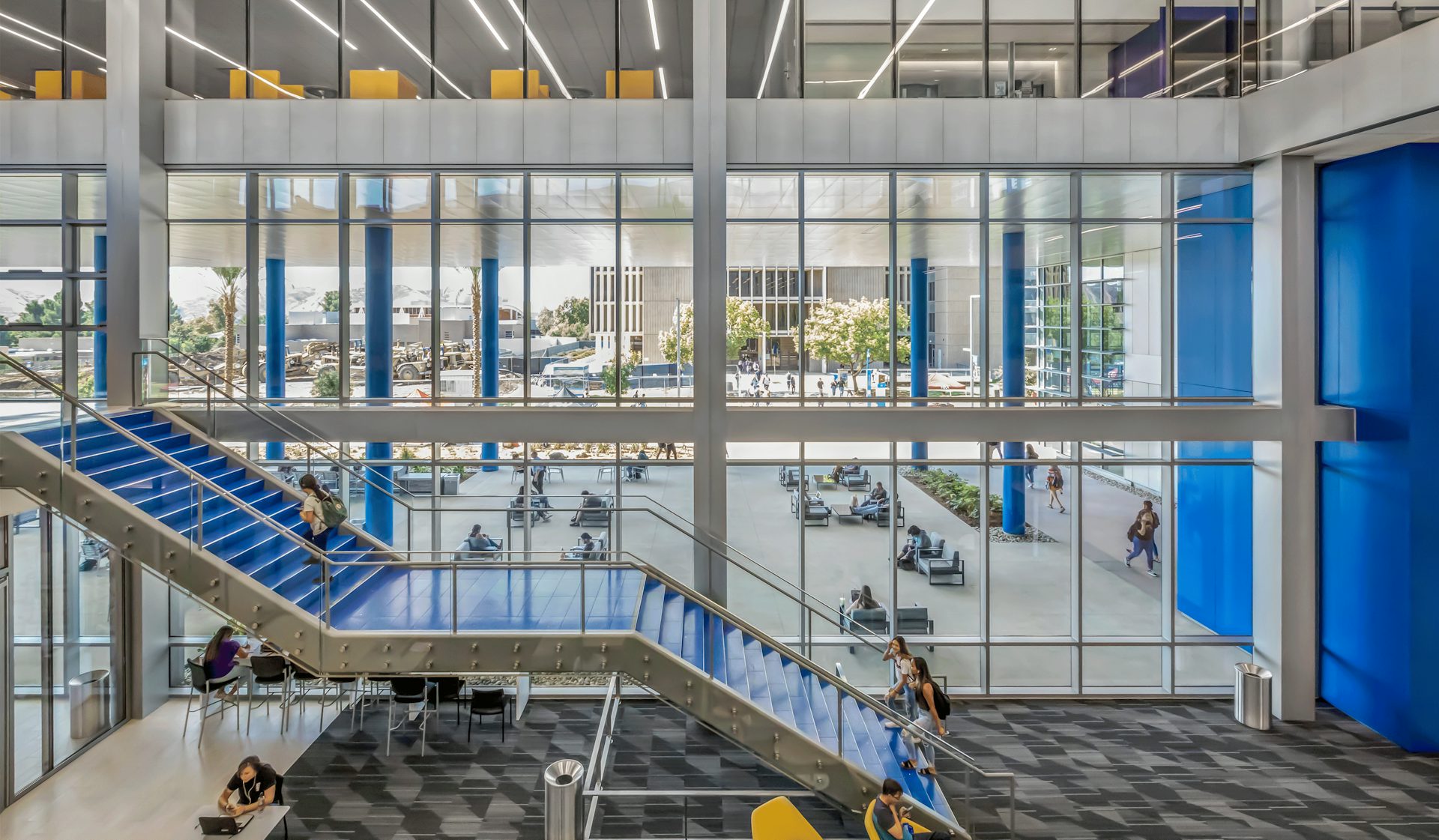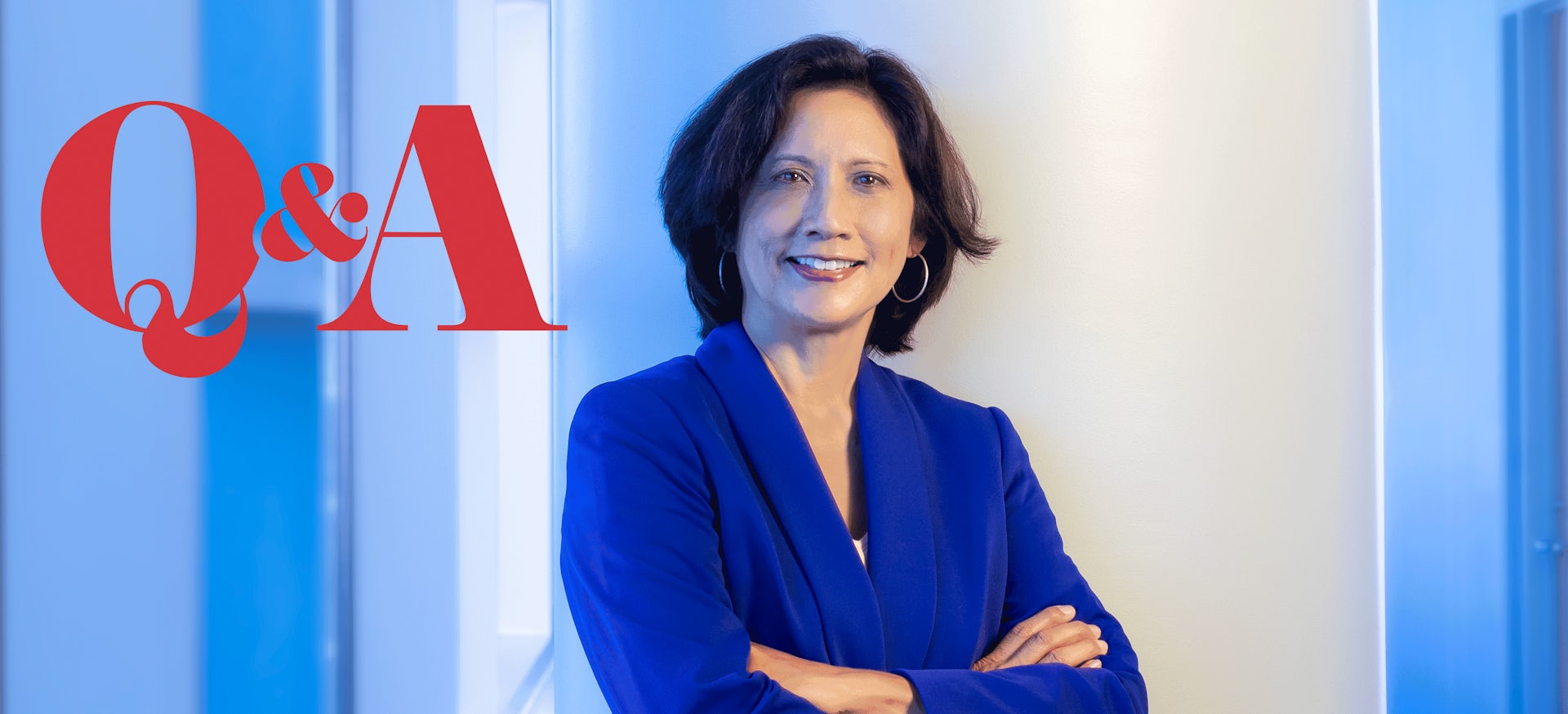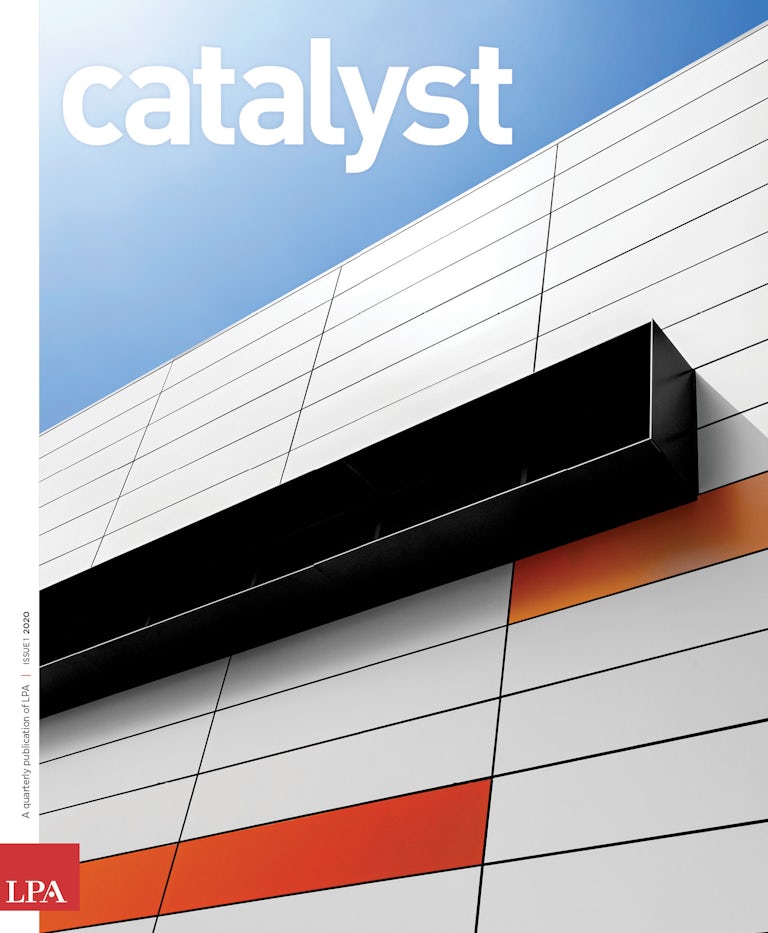As Assistant Vice Chancellor of the California State University system, Elvyra San Juan leads the capital planning, design and construction of facilities for 23 campuses. At a time of rapid change in higher education, she is a strong advocate for long-term planning, sustainable construction and alternative funding methods, as she works to develop campuses that impact the lives of more than 480,000 students every year. In an interview with LPA’s Catalyst magazine, Vi—as she is widely known—discusses the current priorities for sustainability, the evolving campus and the challenges ahead.
Developing Better Universities
Elvyra “Vi” San Juan is leading efforts to find new ways to build high-quality and well-designed facilities that use less energy and serve the evolving needs of students.

Do you feel like the model is changing for Public-Private Partnerships (P3s)?
I think there are always things that could be done better. One of the things we’re trying to do is reduce the time and transaction costs for P3 projects. For example, we developed a standard set of general conditions—to the extent possible over the varying types of P3s—so we don’t have to negotiate these with every developer across different campuses. We can have the same indemnification clause from one agreement to the next, for example. But it’s not easy because each P3 wants to be unique. Each is a little different with different levels of complexity.
Do you see any other delivery methods gaining traction one way or another?
We have developed the Collaborative Design-Build delivery which is becoming the delivery of choice for some campuses. It keeps the advantage of the reduced time to occupancy of a typical design-build and risk mitigation, but enables the owner to provide more input into the design. We also continue to look at how we can improve and streamline small project delivery. As much as a large $40 to $60 million project can take staff time and effort, the $600,000 interior remodel can take a fair amount of campus time and resources.
Switching gears, how are the changing demographics and educational goals affecting your facility strategy?
The trend has been more group study areas, flexible lecture and lab spaces, and more hands-on learning experiences as far as study and academic spaces. We’re seeing more space for student services to support student advising, tutoring and counseling spaces; some are at the university level, while more are being requested at the department level.
What are your priorities in terms of new development?
The priority of the trustees has been to address existing facilities and critical infrastructure needs. Significant investment has been made to reduce the risk of campus wide or critical building shutdowns. With our aging infrastructure, we are fortunate that the state provided funds to help address our facility renewal needs and we continue to seek funds for facility infrastructure needs. We have also focused on science facilities in support of our STEM disciplines and have included makerspaces and group project areas. Campuses are also seeking more undergrad research space, which has not been a focus for us in the past, but provides a beneficial experience for our students. Another area of focus is campus resilience, not only in terms of climate change, but structural strengthening and fire/life safety.
We developed a standard set of general conditions so we don’t have to negotiate these with every developer across different campuses.
Let’s talk about your sustainability role. Are campuses embracing the goals?
Yes, they are. The Board of Trustees approved an updated policy in 2014, and at that time, we had one sustainability officer. We just reported to the Board that we now have 23. And, similarly, we’ll have all of our campuses voluntarily participating in AASHE (Association for the Advancement of Sustainability and Higher Education) STARS reporting. We have more work to do, but campuses are putting resources into sustainability.
What’s your biggest challenge to achieving sustainability goals?
We continue to have increased enrollment and significant demand, so the challenge is, how can we serve that demand, yet reduce our carbon footprint and environmental footprint? How do we move to zero waste and zero net energy, given increased technology in our facilities and growth in our on-campus student housing communities? That’s a challenge in trying to roll back our footprint.
But there are a lot of positives with folks trying to support initiatives. We have solar agreements and battery storage agreements that we’ve put in place, master enabling agreements. If a campus has space in a parking lot or a building, or land available, they can go to a contract that we have executed, get prices from three vendors and move forward in a streamlined approach. We are seeing campuses start to utilize those agreements.

We continue to have increased enrollment and significant demand, so the challenge is, how can we serve that demand, yet reduce our carbon footprint and environmental footprint?
What do you see as your immediate goals? To get to net zero?
We are coming out with target energy-use intensity numbers per building type. We have discussed the approach with campuses for new construction and have more work in that area. It is a multi-pronged approach. We are looking at electrification of central plant heating/cooling production as another effort. I think we can get to net zero, but with limited funding we have to balance the use of capital with numerous facilities and university operational needs. With the amount of deferred maintenance we have—and replacing our building systems, HVAC, electrical—that is an opportunity to replace building systems and significantly reduce the energy use in that building. Our Channel Islands campus may be our first campus to install sufficient solar power generation to carry the campus load. So, it won’t happen overnight, but we are making progress.















